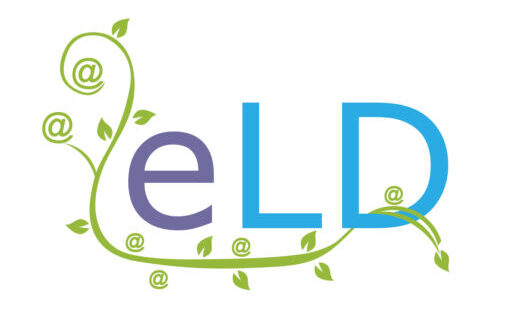Expert Centre
Expert Centre
Expert Centre
Whether you’re new to e-learning or a Moodle power user, these articles offer guidance for every stage of your journey.
Whether you’re new to e-learning or a Moodle power user, these articles offer guidance for every stage of your journey.
How To Start Moodling
Hosting FAQs
If you already have a Moodle site, go to: Site administration > Reports > Course size report. If you don’t have that report enabled, download it here. Once you have that information, you will be able to find a corresponding Moodle Hosting level.
If you’re new to Moodle, you might not know how much space you need, so we would recommend starting on one of our smaller packages (Pearl 3GB or Ruby 5GB) and then moving up the levels (pro rata) if and when your usage grows.
Read more about how to choose a hosting level here.
Shared Hosting levels start at 3GB, moving up in stages to a max of 35GB before a Dedicated Server would be required. This means you can start on a level that suits your current usage, so you’re only paying for what you need.
If you need to move up, the increase will be charged (pro rata) to fall in line with your existing term end and at the level-appropriate price from when that term started. You can find an overview of all levels here.
Every week, we send out emails when you’re on or over your current limit, giving you a chance to clear down to stay within your allowance or the opportunity to level up by arrangement.
If clearing down isn’t possible, a pro-rata invoice will be raised to cover the remainder of your term, but we always keep you fully informed at every stage of the process so there are no unpleasant surprises…
You can read about the biggest impacts on data levels here.
Short answer? No, we use dedicated servers on virtual hosting.
Longer answer? Cloud hosting uses multiple servers to service a single website; web hosting uses a single server; virtual hosting is the middle ground as it removes the risk of a single point of failure for web hosting hardware but still offers exceptional scalability.
For what we do (Moodle/IOMAD application services), virtual hosting is our preferred option as it gives the resilience of cloud but the cost-effective benefits of web.
Our standard service agreements are for a 12-month term and automatically renew unless otherwise instructed. However, we send out the next year’s invoices a few weeks before the renewal date to give you time to decide whether to rollover renew, renew with a multi-year discount, or migrate to another provider.
All invoices have a Term, Start and End date listed, so you always know where you sit.
As long as you’re still within your agreed service term, no. Your data is yours – we won’t hold it to ransom – and we’ll do our best to make it a smooth migration to your new provider.
If, however, you’ve got an outstanding invoice or you’re leaving partway through a multi-year agreement, appropriate charges will be invoiced for immediate payment first.
Alternatively, if you need to take a break from Moodling rather than renewing or migrating, we can either ‘Park’ your site on our servers for a fee, or provide you with a download for you to store somewhere else.
Quick Fix FAQs
The QFP is basic Moodle support, offered to all new hosting clients. In short, if we can fix it in 15 minutes or less, you get it for free!
The QFP covers bugs and snags after migration, installation or integration, as well as any core Moodle problems experienced due to upgrades or community improvements.
If there are issues caused by client-implemented modification, third-party customisation, or a breach of our Fair Use Policy, a fix will incur a charge.
If a fix will take longer than 15 minutes or doesn’t fall under the QFP remit, and you don’t have an official support agreement in place, you’ll be charged at the non-contract rate for the time it takes.
No. We aim to respond within 24 working hours, but there is no official timescale for resolution. If you want the prioritisation (and speed) of an SLA, then you’ll need to pay for an annual support agreement.
No. If you’re an ELD hosting client and your issue falls under the QFP remit, a call will not be necessary for a fix. If you want a call for any other reason, however, you can book them as part of an official support agreement or they can be organised ad-hoc for a fee via any of our contact options.
Managing Your Moodle
Multi-tenancy FAQs
If core Moodle is a single classroom with no reporting privacy or internal archive potential, multi-tenancy Moodle allows for that classroom to be privately shared with multiple companies, saves completion records, and facilitates company-specific customisation.
Need a full (but non-technical) explanation? Go here.
If you want to white-label your courses, then multi-tenancy Moodle makes it easy. Similarly, if you want to give specific managers autonomy for reporting and administration tasks, customising devolution via per-tenant role capabilities gives you a huge amount of flexibility around who is responsible for what.
Learn all about multi-tenancy pros and cons here.
How you pay to use them. Moodle Workplace is provided on a SaaS (Software as a Service or ‘per-user subscription’) model, while IOMAD – just like Moodle itself – is absolutely free to use.
Yes, but only Moodle Workplace.
As MoodleCloud is a SaaS solution, it’s not compatible with the open-source nature of IOMAD.
If you want to see what courses can look like, Moodle offers two free demo sites: Mount Orange, which is pre-populated with courses, activities and users, and Sandbox, where you can try out the various features yourself.
For an open-source multi-tenancy demo (as IOMAD is Moodle under the hood), you can play with the core features here, while everything else you might need to know about IOMAD (including how-tos and FAQs) is here.
Finally, to organise a Workplace demo to allow a full comparison, you’ll need to speak to a Workplace provider. Just choose a Premium Partner, click on the arrow, and it will take you to the contact options.
Moodle Workplace is a Moodle HQ product, so documentation is available on moodle.org
IOMAD is an e-Learn Design solution, so documentation is available on iomad.org
IOMAD FAQs
IOMAD is, at its heart, a suite of plugins that sits on top of core Moodle. Rather than complicating things by adding the plugins individually, IOMAD is provided as a full code ‘package’ so the underlying behaviour is still all Moodle, while the multi-tenancy bit dictates how it works for your installation.
We do. IOMAD is an e-Learn Design multi-tenant solution that has followed Moodle for upgrades, versions and security patches since 2010. And because it’s open source, you don’t need to talk to us to use it. Find everything you need for a successful IOMAD implementation here.
Yes, although there are obviously some (hosting-based) service exclusions if you’re not on e-Learn Design servers. Otherwise, Remote support options are the same as hosted: three levels based on an average monthly requirement.
The use of hours isn’t restricted, so if you need to use a few more at a specific time (as long as you’re within your annual limit), when you use them is up to you. What is restricted is how you use them – creation of non-core IOMAD functionality (so, a new type of report, for example) would be separately chargeable as Development time.
Yes. Just replace the IOMAD core code with Moodle core code of the same version (or higher) and run an upgrade; you’ll then be back on standard Moodle.
Just don’t forget to save your optional plugins in the Moodle code and change your license-based enrolments to a Moodle core enrolment type first. And always always start by taking a full backup…



















